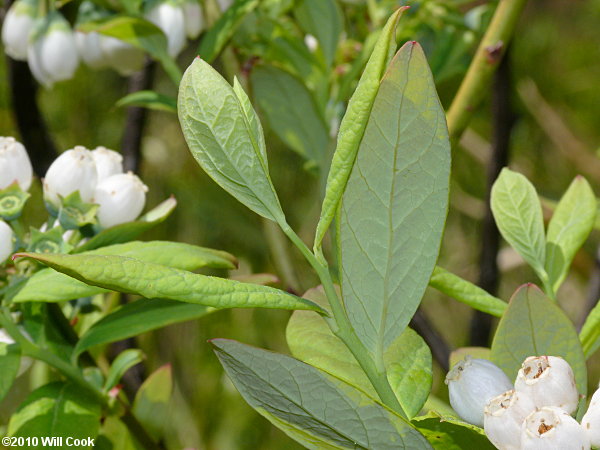
| Southern Highbush Blueberry is a medium-sized deciduous shrub common in moist areas of the Coastal Plain of North Carolina. Many, if not most, cultivated highbush blueberries are of this species. Scotland Co., NC 4/18/10.
| 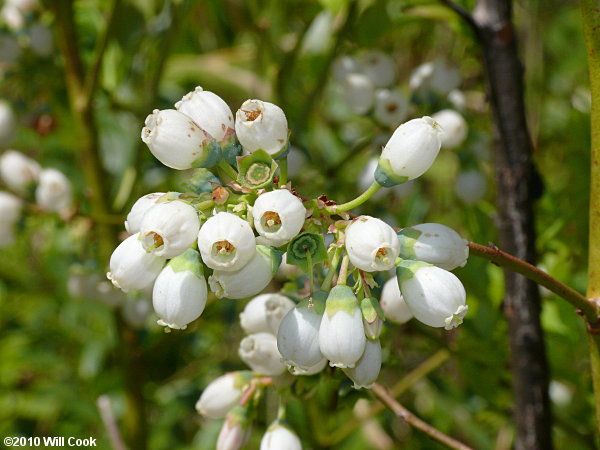
| The flowers of V. formosum are large: ~10 mm long versus ~5 mm long for the similar V. caesariense (rare in NC) and ~7-8 mm long for V. corymbosum (of the mountains). Scotland Co., NC 4/18/10.
|
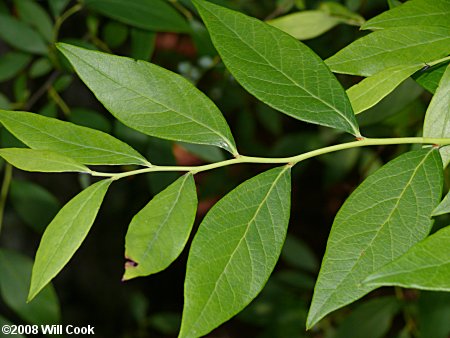
| Confusingly similar to other highbush blueberries formerly lumped in V. corymbosum, the leaves are fairly long (4-10 cm), tend to be broadest below the middle, do not have ciliate margins, and lack stipitate glands beneath. The leaves of the very similar V. caesariense (New Jersey Highbush Blueberry), rare in Coastal Plain bogs and swamps, are 3-6 cm long and tend to be broader at or above the middle. Also compare with Vaccinium corymbosum (Smooth Highbush Blueberry) of the Mountains. Robeson Co., NC 5/29/08.
| 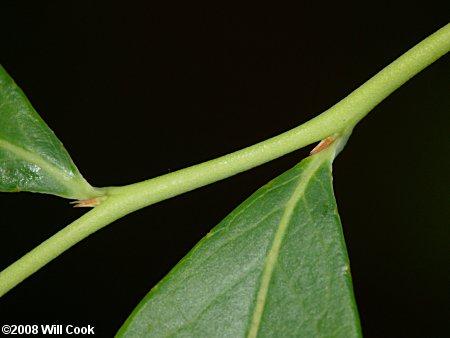
| Young twigs are hairless. Leaf margins are eciliate. Bud scales tend to turn reddish and average slightly longer than those of V. caesariense and V. corymbosum (2-4 mm vs. 1-3 mm). Robeson Co., NC 5/29/08.
| 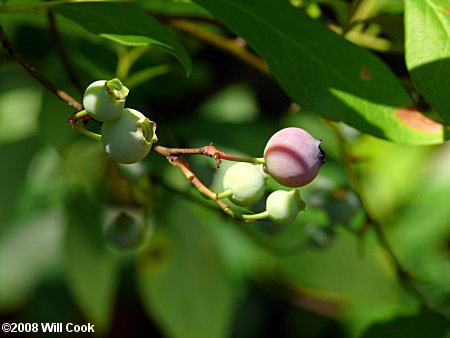
| The berries are large and blue, with a glaucous bloom. This is one of the main blueberry species in cultivation. Robeson Co., NC 5/29/08.
| 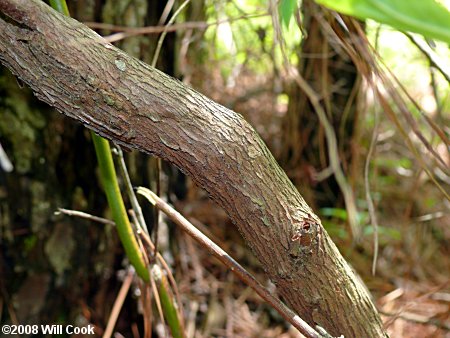
| Bark detail. Robeson Co., NC 5/29/08.
|
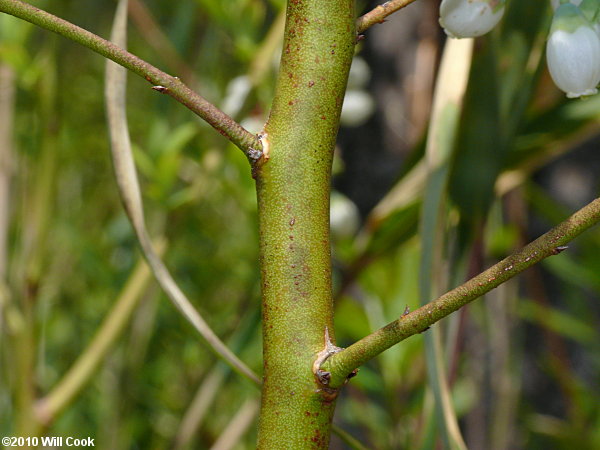
| Young stems have green bark. Scotland Co., NC 4/18/10.
|
Recommended Tree, Shrub, and Woody Vine Identification Guides
|
|






